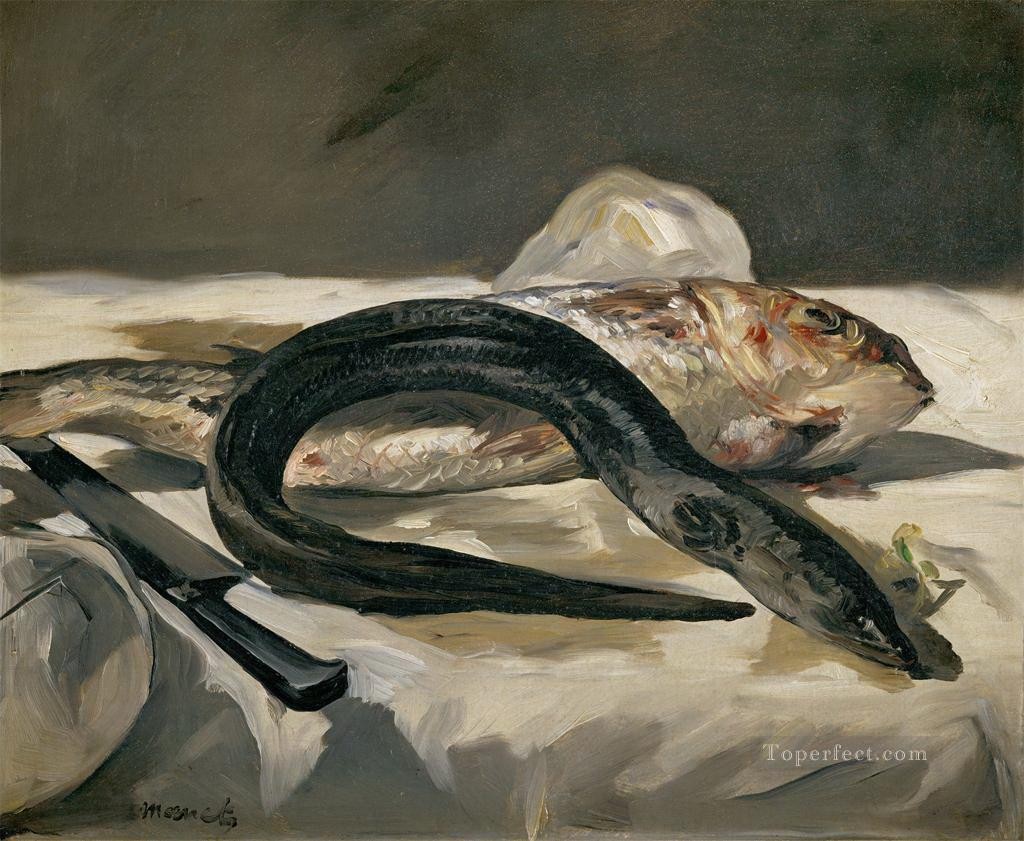adriaticnature aims at puzzling out the inhabitants of the sea and tries to sift this question to the bottom. Hopefully, this part of the project will be interesting and useful for you.
Let’s start with the fish that don’t look like fish. However, we are definitely not the ones to know what the fish should resemble.
Here are some bare facts:
Elopomorpha is the superorder of Teleostomi inhabiting the sea and fresh water, which comprises 4 orders. 2 of them (Notacanthiformes and Anguilliformes, in particular) inhabit the Adriatic Sea.
(Fragment of the painting by Edouard Manet “Eel and Red Mullet”. 1863 year.)
Notacanthiformes are demersal inhabitants of the sea depths. Their eel-shaped bodies are elongated. Tails are thinner at the tips. They inhabit the depths from 125 to 4,900 meters, most of them settle down at the depths from 450 to 2,500 meters. They are ground fish with a small inferior mouth. They feed on invertebrate animals and are found in all seas, except for the Arctic and Antarctic. They are 60 cm long at the max. Notacanthiformes comprise only two bloodlines and about 30 species. Only one representative of the order, that is Nothachanthus bonaparte, is suggested to inhabit the Adriatic Sea.
Anguilliformes are the fish order with a peculiar body shape. Their bodies don’t get thinner at the tail. Besides, the bodies of most of its representatives are not flattened on each side. Eels slither and swim bending the body like snakes. Development of eels occurs through metamorphosis of larva, which is called leptocephalus and differs from the adult eel dramatically.
Anguilliformes include 22 bloodlines and about 350 species. Almost all of them are sea fish. Species of only one bloodline, that is freshwater eels or Anguillidae, are found in freshwater.
The following representatives of two suborders and six bloodlines inhabit the Adriatic Sea: the Anguilloidei suborder (including the Anguillidae family, the Chlopsidae family, the Muraenidae family) and the Congroidei suborder (including the Congridae family, the Nettastomatidae family and the Ophichthidae family). There are 15 species of the Anguilliformes order in the Adriatic.
